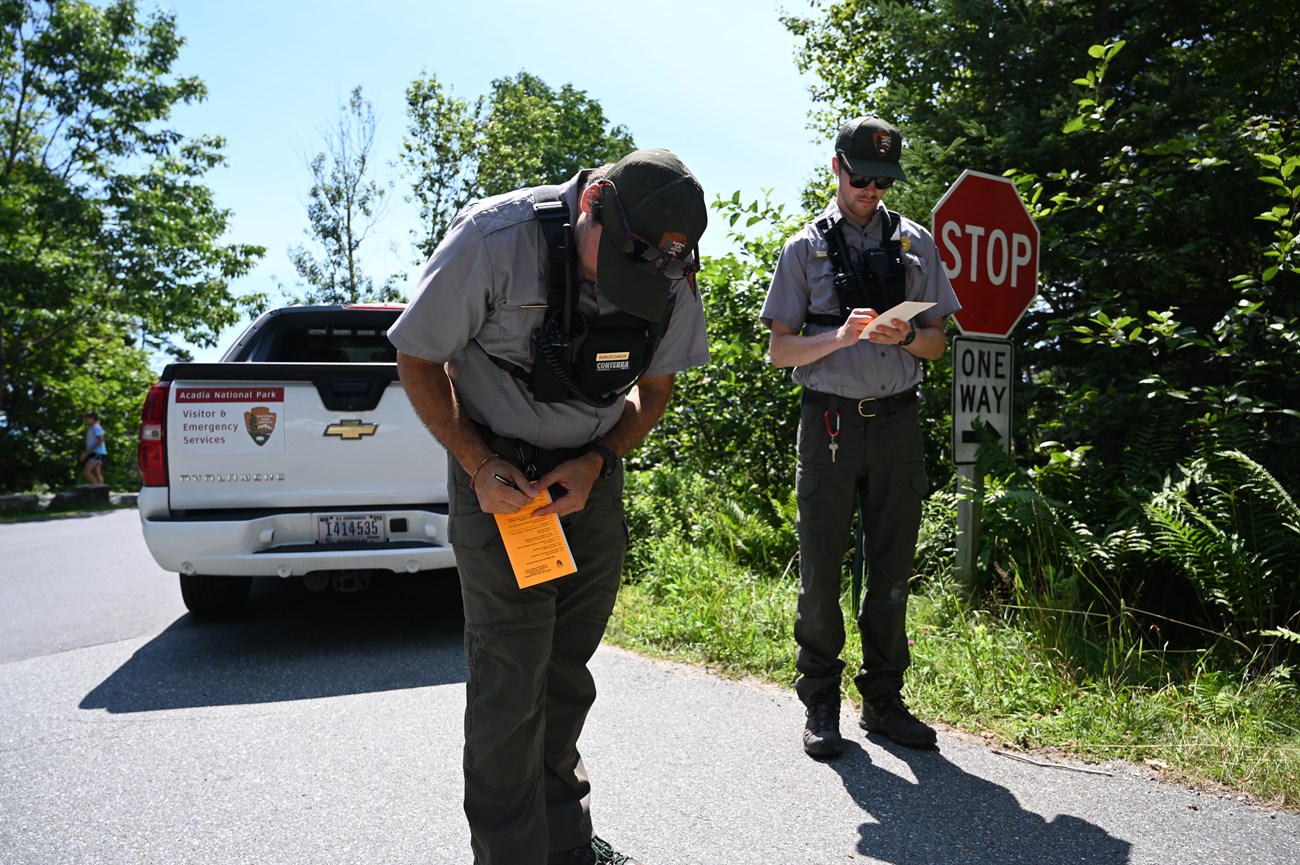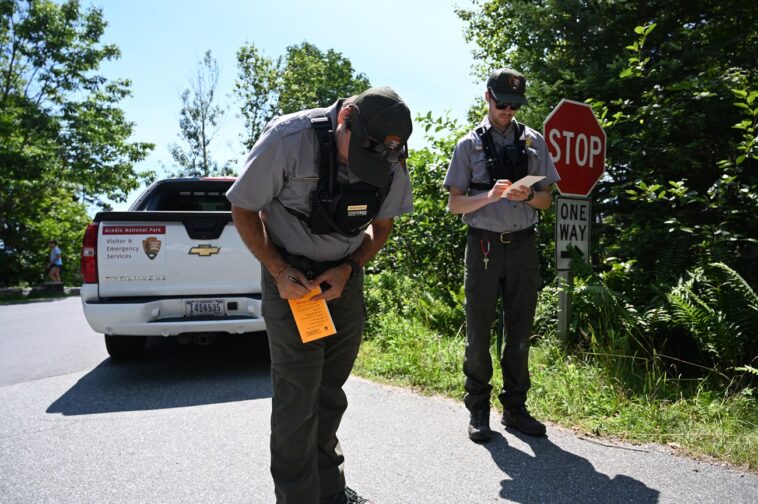

Reassessing Staffing Strategies in Acadia National Park: A Critical Opinion
The perennial debate over staffing shortages in Acadia National Park has taken on a new dimension in recent years. Once a topic widely discussed by park officials and partner organizations, the conversation has suddenly gone quiet. Yet the issue is far from resolved. In this opinion piece, we take a closer look at the tangled issues surrounding seasonal staffing, federal oversight, housing shortages, and the legal implications of administrative decisions that impact one of America’s most cherished national treasures.
Though it may seem like a simple matter of insufficient personnel, the problems at Acadia National Park are loaded with legal, economic, and administrative twists and turns. This editorial will dig into various aspects of this persistent problem by exploring the legislative framework, the dynamics of seasonal workforce shortages, and the broader implications for national park management and local communities.
Legislative and Administrative Tricky Parts in National Park Management
At the heart of the discussion lies the role of the federal government and its administrative practices. Over the past few years, National Park Service (NPS) officials have been facing what many consider to be nerve-racking challenges with seasonal hiring. Initially, the issue was transparently discussed in public meetings and media interviews; however, recent statements indicate a shift away from acknowledging staffing shortages publicly. This transformation raises several questions about oversight, accountability, and the legal responsibilities of federal agencies.
Key legal and administrative factors influencing this decision include:
- Budget allocations, which shape the extent of available resources for hiring temporary workers;
- Federal guidelines and policies that govern employment practices within national parks;
- Management discretion that can sometimes result in differences in data reporting and the handling of personnel issues;
- Political pressure from both local representatives and national bodies that influences administrative priorities.
Each of these points represents a complicated piece of legislation or policy that must be carefully balanced with operational realities. For instance, the decision to stop talking about the problem publicly may be interpreted as a tactical move to avoid political backlash. However, in failing to address the fine details of the problem, park officials are also potentially sidelining critical issues that affect park operations and visitor experiences.
For many legal scholars and public policy experts, understanding this shift requires a deep dive into the little details of administrative discretion. In our view, this silence on the staffing issue may be masking underlying problems that have been building for years in the legal and operational environment surrounding national parks.
Seasonal Workforce Shortages: The Big Picture
The seasonal nature of staffing at Acadia National Park has always been a subject of intense discussion. In recent years, increased visitation—driven by the rebound after the COVID pandemic—has turned the staffing shortage into a problem that affects not only the park’s operational capacity but also the local economy. With historic highs in visitation rates, the park’s need for additional personnel has reached a point where the absence of sufficient staff could transform into a legal and logistical nightmare.
Some of the main points to consider include:
- Peak Season Pressures: As the summer months approach, the need for temporary workers increases significantly. Without an adequate hiring surge, the park may face delays in maintenance and visitor services.
- Resource Allocation: Current federal budgets and allocations may not be sufficient to meet seasonal peaks in demand, leaving park officials to manage with minimal resources.
- Role of Technology: In an era of high-tech solutions, some have argued for automated processes to supplement the human workforce. However, the unique nature of park operations requires a personal touch that technology cannot replace.
A comparative table can help clarify these seasonal dynamics:
| Season | Visitor Numbers | Staffing Requirements | Current Gap |
|---|---|---|---|
| Spring | Moderate | Basic operational staff | Slight |
| Summer | High | Extended workforce for maintenance and guest services | Significant |
| Fall | Moderate to high | Seasonal maintenance and event staff | Moderate |
Observing this data, it becomes evident that the staffing crisis is not just a temporary setback but rather a recurring pattern. The legal implications are clear: if parks cannot maintain their performance during peak periods, they may face lawsuits over visitor safety or inadequate service provisions. This aspect adds another layer of complexity for lawmakers and administrators who must balance operational practicality with potential legal liabilities.
Housing Constraints and Their Legal Implications on Workforce Stability
Another factor contributing to staffing challenges is the severe shortage of affordable housing in and around Acadia National Park. Over the years, many local residences have been snapped up by commercial short-term rental investors. This trend has significantly diminished the options available for potential seasonal workers and even permanent employees who might otherwise contribute to park services.
The following points outline the connection between housing constraints and staffing problems:
- Increased Cost of Living: With local housing markets skewed by short-term investors, the cost of living has soared, making it difficult for low-paid seasonal employees to find adequate accommodation.
- Reduced Workforce Pool: As potential workers find themselves priced out of housing options, the available talent pool for seasonal roles shrinks considerably.
- Legal Ramifications: There is a growing legal debate over housing rights and employment stability. The inability to secure housing may give rise to lawsuits or demands for increased government intervention.
Local governments and policymakers are increasingly aware of this connection, which might lead to remedial measures if proper legal frameworks are put in place. This is a classic example where a housing crisis indirectly influences public service operations—a situation that is both tangled and full of problems from a legal perspective.
Many legal analysts have compared the current housing shortage to a hidden complexity within the broader staffing shortage dilemma. Their findings suggest that resolving the workforce problem at Acadia will require a multi-pronged approach that addresses not only hiring practices but also the housing market. Future legislation may need to focus on incentives for affordable housing development near national parks or adjustments in regulatory policies to balance the interests of investors and local employees.
Federal Oversight and the House’s Efforts to Boost Seasonal Hiring
The role of federal oversight in managing national park staffing issues cannot be underestimated. Recently, discussions in congressional circles have turned to the question of whether additional federal support could help alleviate the seasonal staffing crunch at Acadia. While some lawmakers, including prominent representatives from Maine, have warned of the long-term consequences of ignoring staffing gaps, others remain optimistic that the issue can be managed with a more proactive hiring strategy.
Multiple layers of federal and local government oversight influence how staffing decisions are made:
- Budgetary Controls: Legislative bodies at both the state and federal levels determine the funds available for national park staffing, which directly affects hiring capacity.
- Policy Directives: Specific rules and guidelines govern seasonal employment in the National Park Service, often limiting the speed and flexibility with which new hires can be onboarded.
- Administrative Coordination: Cooperation between park management and federal agencies is crucial for ensuring that staffing levels meet the operational demands during peak visitation seasons.
A summary table below encapsulates the interplay of these factors:
| Factor | Impact on Staffing | Related Legal Considerations |
|---|---|---|
| Budget Allocation | Limits hiring numbers | Potential budgetary mismanagement claims |
| Policy Directives | Defines hiring procedures | Regulatory compliance issues |
| Administrative Coordination | Ensures timely onboarding | Liability for service failures |
The actions of federal officials are therefore subject to intense scrutiny. On one hand, any misstep in handling seasonal hiring could eventually lead to service disruptions that affect millions of visitors. On the other, the political ramifications are equally daunting. Diverse political opinions about the adequacy of seasonal personnel invite debates that often blur the boundaries between public opinion and administrative best practices.
From a legal standpoint, federal oversight in this context is tasked with ensuring that the National Park Service does not inadvertently violate its statutory obligations to provide safe and high-quality visitor experiences. Given the intense public and political interest in the park, any legal missteps could set a precedent for future federal management practices across the national park system.
Policy Loopholes and the Balance of Political Perspectives
The issue of staffing shortages at Acadia is further complicated by the balance of political perspectives on federal support and job creation. Some lawmakers argue that simply injecting more funding will solve the problem, while others maintain that the approach is too simplistic given the nerve-racking complexity of the issues at hand. Disagreements over workforce policies are common in bipartisan debates about the National Park Service, and the current speech of park officials reflects a tension that is as much political as it is operational.
Several points emerge when examining the political dimensions of this debate:
- Partisan Interpretations: While some Democratic representatives have openly criticized the federal response to seasonal staffing gaps, certain Republican counterparts remain cautiously optimistic, suggesting that existing figures indicate sufficient personnel for summer operations.
- Communication Gaps: A noticeable shift in public statements by park officials signals an attempt to quiet increasingly heated debates, resulting in a lack of transparency that many constituents find off-putting.
- Future Legislative Proposals: There is a growing call among local lawmakers to revisit the policies that govern seasonal hiring. Proposed changes include more flexible hiring practices, increased funding for temporary staffing, and incentives that could stimulate local housing developments for workers.
In table form below, we compare the contrasting viewpoints:
| Political Group | Main Concern or Proposal | Underlying Assumption |
|---|---|---|
| Democrats | Inadequate staffing jeopardizes visitor safety and service quality | More funding and flexible hiring practices are crucial |
| Republicans | Current staffing might be sufficient if managed better | Enhanced administrative efficiency will resolve shortfalls |
These differences in opinion contribute to a broader debate on how public resources should be allocated and how federal agencies can best support state and local interests without overstepping legal boundaries. As local communities feel the impact of these administrative choices—particularly in terms of economic and operational stability—it becomes increasingly important to figure a path that honors both the letter and the spirit of the law.
Political debates of this nature have a ripple effect, influencing everything from public trust in governmental institutions to the practical day-to-day running of national parks. The current silence on the staffing issue by park officials can be seen as an attempt to sidestep the tense political environment, but doing so may also inadvertently postpone the much-needed legal and policy reforms necessary for long-term solutions.
Comparative Analysis with Other National Parks and Local Impacts
To truly understand the legal and operational challenges at Acadia, it is helpful to compare the situation with staffing issues in other national parks. Similar patterns of seasonal staffing shortages are not unique to Acadia but are, in fact, common across the nation’s park system. However, the local dynamics in Maine—especially related to housing and workforce availability—give the issue a unique twist.
Some of the contrasting issues include:
- Visitor Demands: While all national parks experience peak season challenges, Acadia’s surge in visitor numbers following the COVID pandemic has been especially dramatic.
- Local Workforce Availability: In regions where affordable housing is more accessible, parks might overcome seasonal challenges with greater ease. In Maine, however, the shortage of local residences remains a significant barrier.
- Economic Ripple Effects: Staffing shortages not only affect park operations but also impact local businesses. With fewer workers and possibly diminished services, nearby communities may suffer economically in the long run.
In addition to these points, there is a need to address the small distinctions between administrative practices in various states. For example, some national parks in regions with more robust local economies have been able to adjust more nimbly to seasonal demands. By contrast, Acadia’s location and its dependence on a transient workforce underscore the need for a tailored legal and policy response.
Consider the following side-by-side comparison:
| Aspect | Acadia National Park | Other National Parks |
|---|---|---|
| Visitor Surge | Historic highs post-COVID | Steady seasonal fluctuation |
| Local Housing Market | Significantly constrained by short-term rentals | Varies, but generally more balanced |
| Staffing Flexibility | Limited by administrative policies and funding | More adaptive hiring practices in some regions |
This comparison highlights that while seasonal staffing challenges are a national issue, the legal and operational responses must account for local factors. In Acadia, the convergence of high visitor numbers and a tight housing market demands innovative policy adjustments—measures that are both critical and sensitive to the community’s needs.
Legal experts and public policy professionals argue that lessons learned in other regions should guide the development of new strategies in Maine. These strategies might include novel legislative proposals that incentivize affordable local housing, more flexible federal hiring practices, and improved communication channels between park officials and local government. Until such measures are implemented, the local impacts of staffing shortages will continue to ripple through Acadia’s operational integrity and the economic well-being of its surrounding communities.
Conclusion: Charting a Course Through Legal and Policy Twists and Turns
In summary, the cessation of public discussion about Acadia National Park’s understaffing issue is not an indication that the problem has been resolved. Rather, it is a sign of the complicated pieces and nerve-racking challenges that come with trying to manage a high-profile public institution in today’s politically charged environment. The silence, in this case, might be seen as an attempt to steer through the tense political discourse while sidestepping the fine points of legal compliance and operational transparency.
Our analysis suggests that several key areas need immediate attention:
- Enhanced Federal Support: Legislative changes that secure additional funds and allow for more rapid seasonal hiring should be a top priority.
- Housing Solutions: Addressing the local housing crisis is imperative, as it directly impacts the ability to attract and retain seasonal workers.
- Improved Communication: Park officials must restore transparency by openly discussing staffing challenges and engaging in dialogue with local representatives.
- Policy Reforms: Reevaluating and reforming the administrative guidelines that currently restrict hiring flexibility could provide a template for managing similar challenges in other national parks.
These measures are not just super important for ensuring the smooth operation of Acadia National Park; they are also key to maintaining public trust in the federal agencies tasked with the stewardship of our national treasures. If we are to resolve the hidden complexities of the staffing crisis, innovative legal and policy solutions must address both the immediate staffing needs and the broader systemic issues contributing to these challenges.
The case of Acadia is a reminder that legal oversight must be dynamic enough to handle the twists and turns of modern administrative challenges. As policymakers and park officials work through these tangled issues, they must remember that effective solutions often lie in a balanced approach—one that acknowledges the reality of current pressures while also embracing long-term strategies for sustainable operation.
With millions of visitors relying on the park for both recreation and education, the stakes could not be higher. The silent period regarding staffing shortages might be temporary, but its long-term consequences could be far-reaching if no decisive measures are taken. In the end, legal, administrative, and political stakeholders all have a role to play in making sure that national parks not only survive but thrive in an era of unprecedented public demand and shifting economic realities.
In conclusion, the Acadia National Park staffing situation unveils a layered legal puzzle that extends from federal oversight to local housing markets. By taking a closer look at the tricky parts of legislative processes, seasonal hiring challenges, and policy loopholes, it becomes clear that a multifaceted approach is needed. This approach should not only address the immediate operational demands but also set the stage for broader legal and administrative reforms aimed at preserving the quality and accessibility of one of America’s national gems.
Moving forward, it is essential for policymakers, legal experts, and community leaders to acknowledge and address the nerve-racking challenges head-on. To sum up the key points:
- Transparent communication between park officials and local lawmakers will build trust and ensure alignment on priorities.
- Investments in affordable local housing are indispensable for supporting a stable and dedicated seasonal workforce.
- A thorough review and potential reform of federal hiring practices could pave the way for more agile solutions in peak periods.
- Learning from the experiences of other national parks enables a more tailored and effective response to Acadia’s unique challenges.
In these trying times, when public institutions grapple with both administrative hurdles and legal constraints, a pragmatic path forward is the only way to secure the future of our national parks. This editorial ultimately calls for a renewed commitment to transparency, flexible policy-making, and proactive management backed by robust legal frameworks.
By rethinking the staffing strategies at Acadia National Park through a legal lens, we have an opportunity to not only solve a pressing operational problem but also set a precedent for how similar issues should be handled nationwide. Addressing these tangled issues with smart, innovative, and practical solutions is not simply about filling vacant positions—it is about preserving the legacy of public lands for generations to come.
In today’s climate, where political and legal debates often intertwine with practical operational challenges, taking the wheel means being willing to confront the off-putting and overwhelming hurdles head-on. Through open dialogue, legislative ingenuity, and a shared commitment to our public institutions, we can forge a path that respects the delicate balance of legal obligations and administrative demands, ensuring that America’s natural wonders remain accessible and well-maintained for all.
Ultimately, it is incumbent upon us—as legal scholars, policymakers, and community members—to not let the quiet silence mask a storm of unresolved issues. The time to reconnect with the messy legal bits, the small distinctions of policy, and the hidden complexities of national park management is now. Only then can we make our way through the tense and challenging environment of modern administration while upholding the enduring values that make our national parks a beloved and irreplaceable part of our heritage.
Originally Post From https://www.bangordailynews.com/2025/03/17/hancock/hancock-government/acadia-national-park-stops-talking-about-being-understaffed-joam40zk0w/


